Scientific name: Fallugia paradoxa
Common name: Apache plume
Family name: Rosaceae
Article from writings of Janice Tucker (1946-2021)
Every year from spring through fall in and around Santa Fe, the Apache plume returns for an encore performance with its “bloom and plume” show, appearing along the roadsides, on arroyo banks, in open fields and in home gardens.
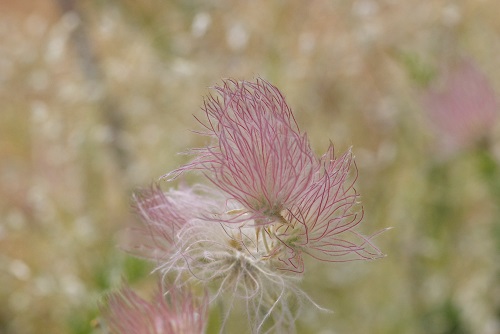
Apache plume. Photo by Janice Tucker.
The botanical genus Fallugia is named for an Italian botanist, Abbott V. Fallugi of Vallombrosa. circa 1840. The specific epithet paradoxa means “contrary to expectation” and is more descriptive of the plant because “contrary to expectation”, the Apache plume is a member of the Rose family (Rosaceae).
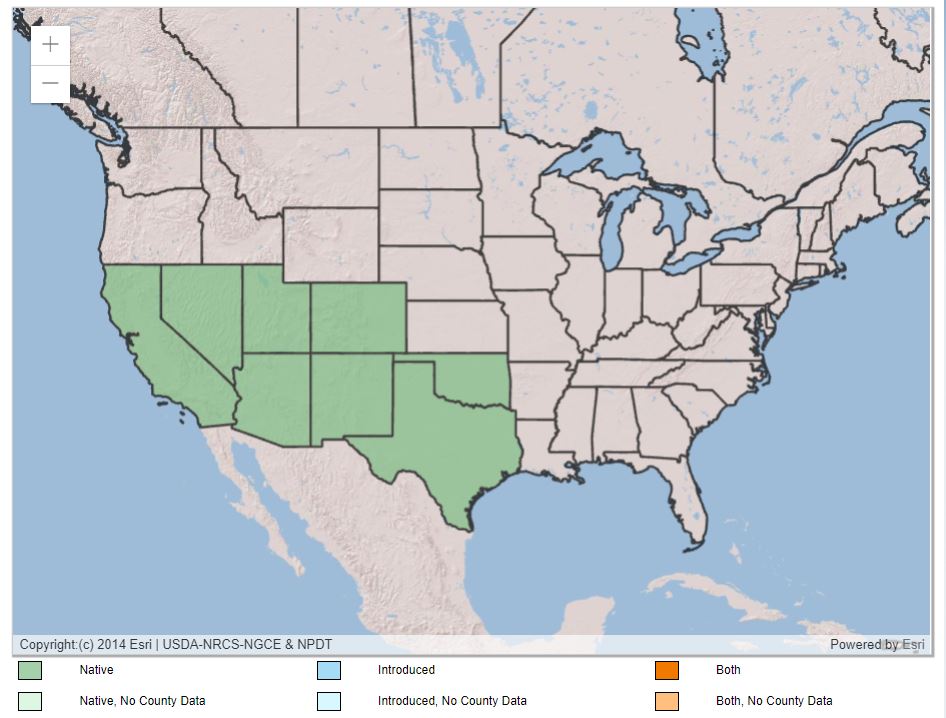
USDA, NRCS. 2023. The PLANTS Database (http://plants.usda.gov, 03/13/2023). National Plant Data Team, Greensboro, NC USA.
The Apache plume is native to New Mexico and can also be found in south-central Colorado, southern Utah and Arizona. This showy, deciduous to semi-evergreen shrub typically grows between 3 to 5 feet tall, but can reach a height of 8 feet by 10 or more feet wide. The stems have shreddy pale beige bark. Gracefully arched new stems, growing directly from the roots, surround the older, upright central stems. The small, gray-green downy leaves are about ¾ inches long and curve slightly downward. They are alternate and pinnately divided into linear divisions.
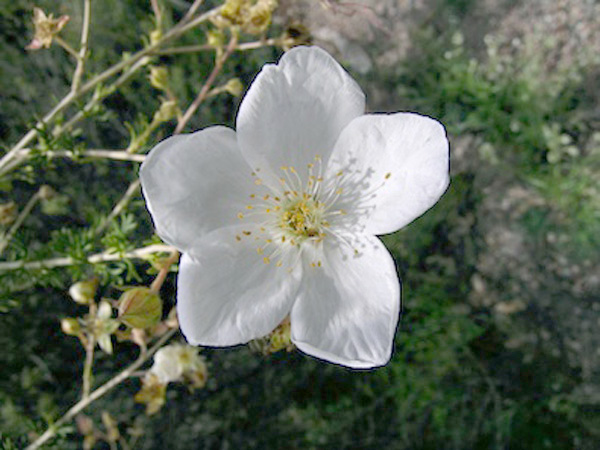
Fallugia paradoxa flower. Photo by Janice Tucker.
The true beauty of Apache plume lies in its 1 ½- inch, yellow-centered, white flowers like single rose blossoms, followed by pink silky-plumed seed heads which cover the branches for several months, giving the plant a soft mauve tint. The blooms first appear in spring and are recurrent throughout the summer, especially after monsoon rains. The plant thus rewards us with an extended season of visual beauty, often showing off both its brilliant flowers and feathery plumes at the same time.
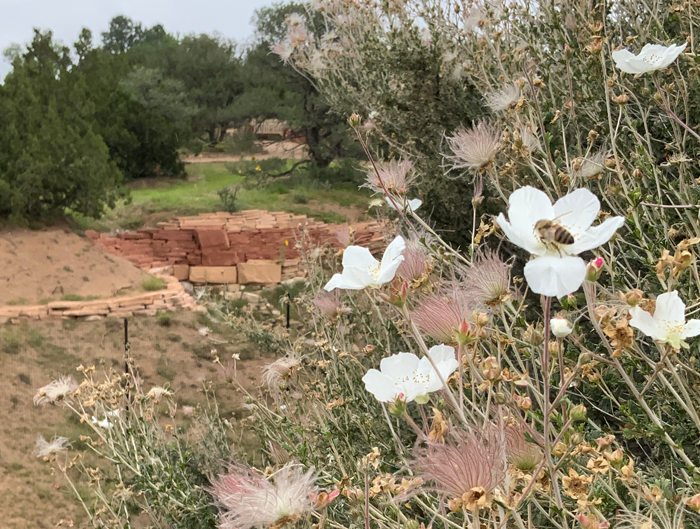
Apache plume growing along arroyo at Botanical Garden. Photo by Cristina Salvador.
The Apache plume’s natural habitat is along sandy arroyos, on dry rocky slopes and in open piñon-juniper woodlands at elevations of 3,000 to 8,000 feet. The flowers attract bees and butterflies and provide shelter for small wildlife. Birds are attracted to the seeds and deer will occasionally browse it, especially in late winter.
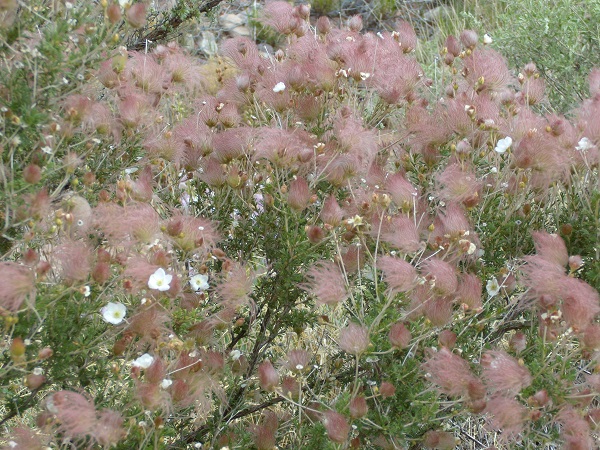
Fallugia paradoxa. Photo by Tracy Neal.
Apache plume’s many attributes make it an ideal plant for xeric gardens. It prefers full sun and is cold hardy to minus 30 degrees F. Because it truly does prefer dry conditions, supplemental watering is usually not necessary after establishment. It needs no fertilizer and little maintenance, but its carefree billowy shape mean it is best placed in more natural areas of the garden. It can be pruned back lightly to shape and encourage fresh growth and more blossoms, but hard pruning or shearing gives it a somewhat unnatural look. Plant it to the east or west of your view where you can admire the lovely backlit plumes.
Because those plumes bear a resemblance to Indian feather bonnets, it was given the common name of Apache plume. Native Americans once brewed a tea from the leaves to promote hair growth.
This lovely plant lives in the Santa Fe Botanical Garden at Museum Hill and can be enjoyed from May through October wherever it grows naturally. It may not look like a rose, and it may not smell like a rose, but its flowers and plumes can certainly claim the beauty we have come to expect from the many plants in the Rose family.


